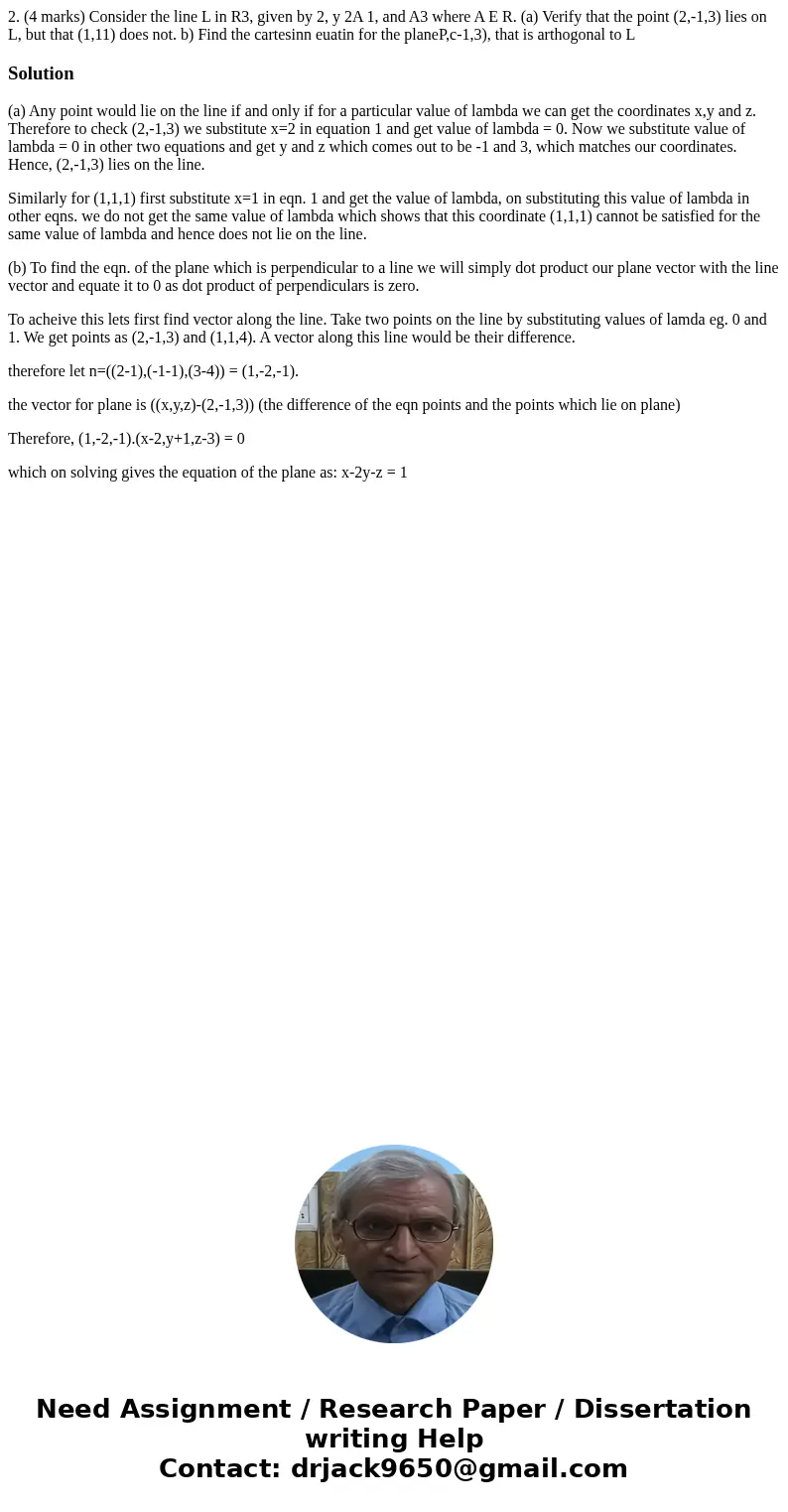2 4 marks Consider the line L in R3 given by 2 y 2A 1 and A3
Solution
(a) Any point would lie on the line if and only if for a particular value of lambda we can get the coordinates x,y and z. Therefore to check (2,-1,3) we substitute x=2 in equation 1 and get value of lambda = 0. Now we substitute value of lambda = 0 in other two equations and get y and z which comes out to be -1 and 3, which matches our coordinates. Hence, (2,-1,3) lies on the line.
Similarly for (1,1,1) first substitute x=1 in eqn. 1 and get the value of lambda, on substituting this value of lambda in other eqns. we do not get the same value of lambda which shows that this coordinate (1,1,1) cannot be satisfied for the same value of lambda and hence does not lie on the line.
(b) To find the eqn. of the plane which is perpendicular to a line we will simply dot product our plane vector with the line vector and equate it to 0 as dot product of perpendiculars is zero.
To acheive this lets first find vector along the line. Take two points on the line by substituting values of lamda eg. 0 and 1. We get points as (2,-1,3) and (1,1,4). A vector along this line would be their difference.
therefore let n=((2-1),(-1-1),(3-4)) = (1,-2,-1).
the vector for plane is ((x,y,z)-(2,-1,3)) (the difference of the eqn points and the points which lie on plane)
Therefore, (1,-2,-1).(x-2,y+1,z-3) = 0
which on solving gives the equation of the plane as: x-2y-z = 1

 Homework Sourse
Homework Sourse